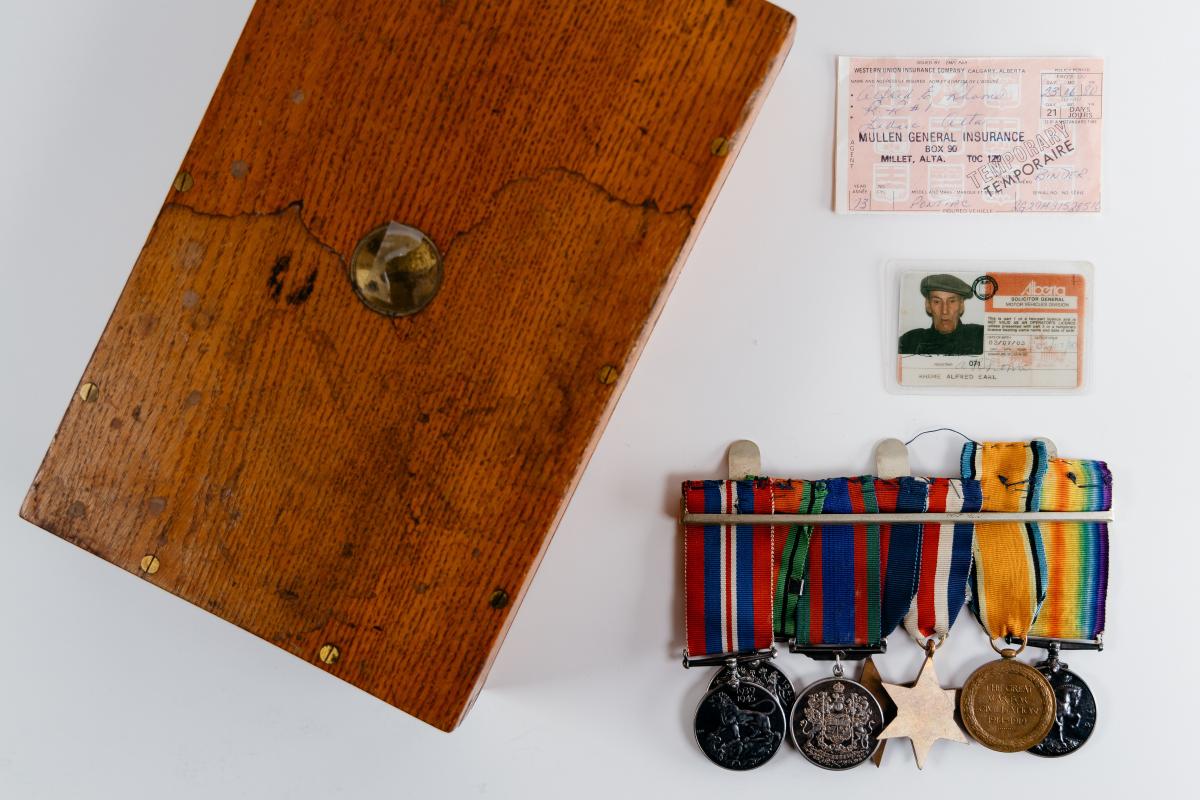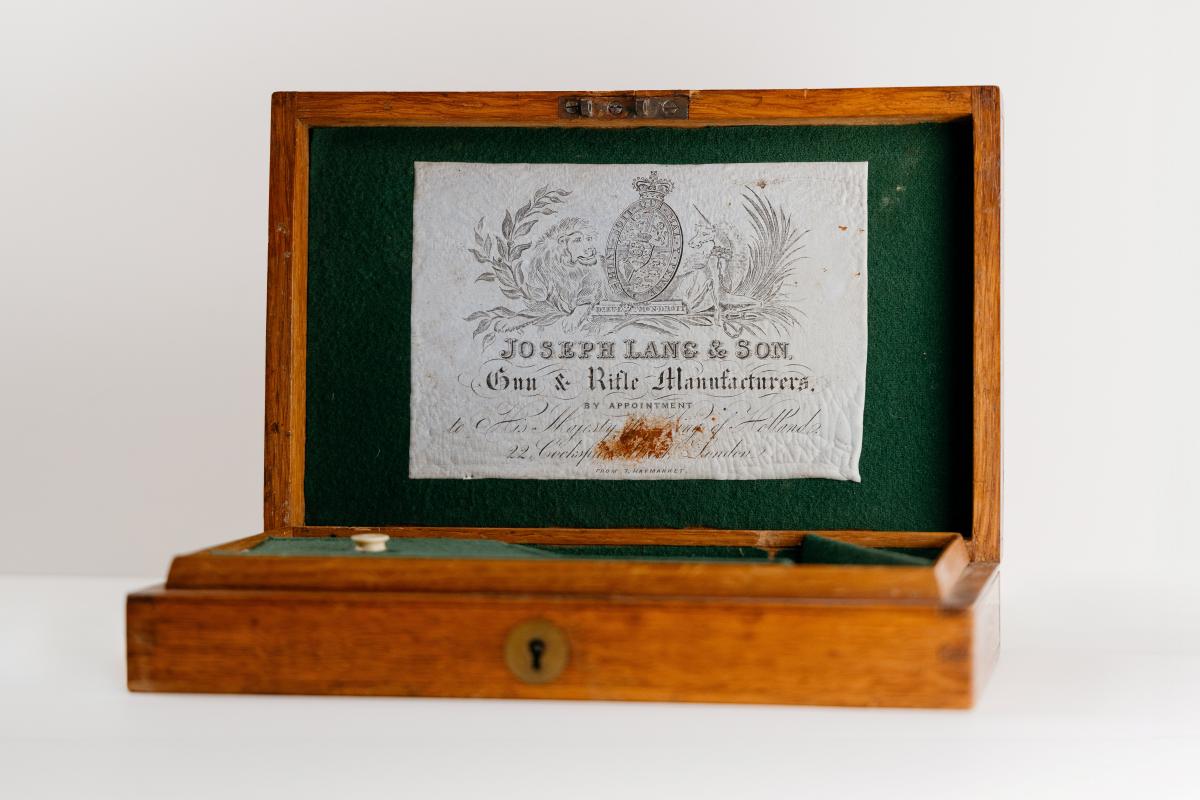Honouring a veteran’s legacy through artifacts
Getting to know the collection:
Artifact spotlight at the Dr. Woods House Museum
In the quiet of the Dr. Woods House Museum, a small collection of worn objects rests on a worktable, each one a silent witness to a story of extraordinary courage, sacrifice, and patriotism. The spotlight today is on Alfred Earl Rhome, a local World War I and II veteran, whose legacy endures through the preservation of his personal artifacts—his license, a distinguished collection of medals, his gun box, and a timeworn hat that once sat proudly on his head.
The City’s cultural development team is working to meticulously care for these items to ensure their story survives for generations. Each artifact presents its own set of challenges, requiring research and careful handling to protect them and their stories from the wear of time.

Uncovering history: research and the man behind the artifacts
The journey begins with research. By cross-referencing records, enlistment papers, birth certificates, donation records and more, staff have uncovered a fascinating detail about Alfred. By comparing his birthdate and enlistment records, it’s been discovered that he likely lied about his age to join the war effort, enlisting in the military at an age younger than regulations allowed (somewhere between 16 and 17 years old). This act was not uncommon during times of national need.
Alfred is among the most decorated veterans that City staff have documented in the museum collection so far. He earned numerous medals during his service, and these honours—yet to be fully detailed, but include the Victory Medal (Inter-Allied War Medal) 1914-1919 and the Army Class A Badge—bear testimony to a career of valour and dedication that spanned both World Wars.
Alfred rests in the Leduc Municipal Cemetery, and his story provides a powerful local connection to Canada’s military history and a reminder of the sacrifices made during that time.
Artifact preservation: techniques to preserve history
With the importance of these objects in mind, the City’s team is applying careful conservation techniques to each item.

Alfred’s hat, worn through years of service, requires special attention. It’s been mounted on a custom-built support to prevent the material from deteriorating under its own weight. The fabric, susceptible to damage from light and moisture, will be stored in a low-light, controlled environment to prevent degradation.
The medals, a shining testament to the veteran’s gallantry, need delicate handling as well. Each medal is carefully polished to preserve their original luster without damaging their integrity. The medals will be stored in closed containers to prevent the settling of dust and other pollutants and protect them from changes in humidity and temperature, as well as to protect the silk ribbons from UV light.
Alfred’s gun box, which housed the medals upon donation, is made of wood, felt, metal and glue. The soft wood and felt require gentle cleaning using a brush and a variable speed vacuum to safely clean the surfaces of loose dirt and dust. It will be carefully stored and monitored to ensure it remains pest and mold free.
The paper artifacts—Alfred's license and insurance slip—require special treatment. Paper is highly susceptible to light, temperature, and humidity changes, so these items will be stored flat in acid-free folders and in a controlled, dim environment to prevent fading, yellowing, chemical, and physical breakdown.

A timely reminder: preserving legacy ahead of Remembrance Day
As Remembrance Day approaches, these artifacts take on even more significance. They are more than just objects; they are memories reminding us of the human stories behind the history we honour. Each medal, every thread of the hat, and every scuff on the gun box is a testament to Alfred’s sacrifices and contributions to our community and country.
The work to protect these artifacts is as much about the future as it is about the past. By preserving these pieces of his life, the contributions of Alfred and all veterans who served are remembered, and their legacies of courage will continue to educate and inspire future generations.
Collection Count: Since acquiring the collection, City staff have inventoried more than 4,000 artifacts. This is estimated to be just one-third of the items in the house!
Share Your Thoughts: The City of Leduc is looking for your input on museum and heritage asset management. Feedback will be considered in the City’s long-term planning decisions about how to sustainably operate and manage the Dr. Woods House Museum and other heritage assets in our community. Register online and join us for an in-person session on Nov. 14 or Nov. 18 from 6:30 - 8 p.m. at the Leduc Public Library.
*The museum currently remains closed for public access to allow staff to focus on the collection.